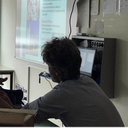Magnetic resonance for laryngeal cancer.
الكلمات الدالة
نبذة مختصرة
OBJECTIVE
This review summarizes the most recent experiences on the integration of magnetic resonance in assessing the local extent of laryngeal cancer and detecting submucosal recurrences.
RESULTS
Advances in magnetic resonance have been characterized by the development of technical solutions that shorten the acquisition time, thereby reducing motion artifacts, and increase the spatial resolution. Phased-array surface coils, directly applied to the neck, enable the use of parallel-imaging techniques, which greatly reduce the acquisition time, and amplify the signal intensity, being closer to the larynx. One of the most important drawbacks of this technique is the small field-of-view, restricting the imaged area to the larynx. Furthermore, diffusion-weighted imaging (DWI) has increased the set of magnetic resonance sequences. Differently from computed tomography (CT), which has only two variables (precontrast/postcontrast), magnetic resonance is based on a multiparameter analysis (T2-weighting and T1-weighting, DWI, and postcontrast acquisition). This multiparameter approach amplifies the contrast resolution. It has, also, permitted to differentiate scar tissue (after laser resection) from submucosal recurrent disease. In addition, DWI sequences have the potential of a more precise discrimination of peritumoral edema from neoplastic tissue, which may lead to improve the assessment of paraglottic space invasion.
CONCLUSIONS
Magnetic resonance of the larynx is technically challenging. The use of surface coils and motion-reducing techniques is critical to achieve adequate image quality. The intrinsic high-contrast resolution is further increased by the integration of information from different sequences. When CT has not been conclusive, magnetic resonance is indicated in the pretreatment local assessment and in the suspicion of submucosal recurrence.


